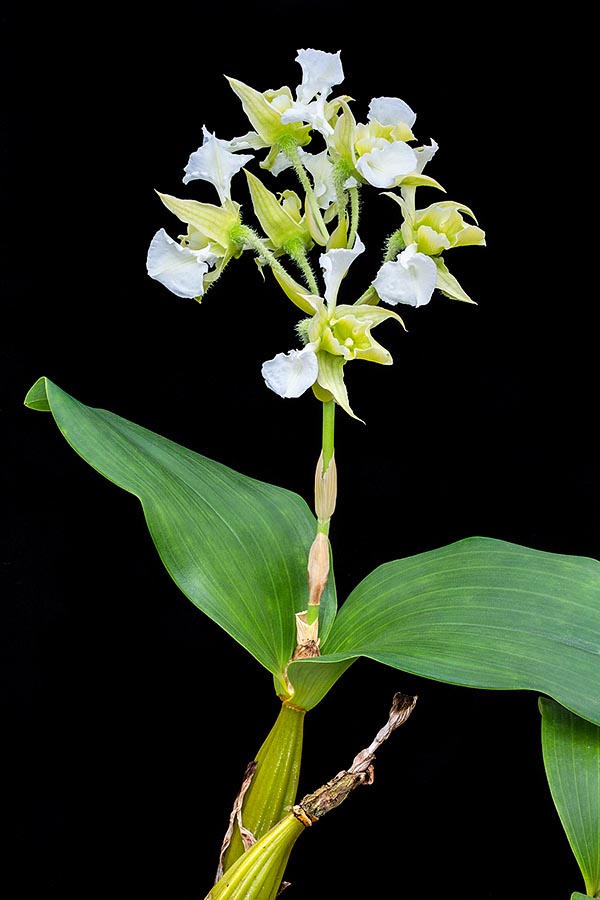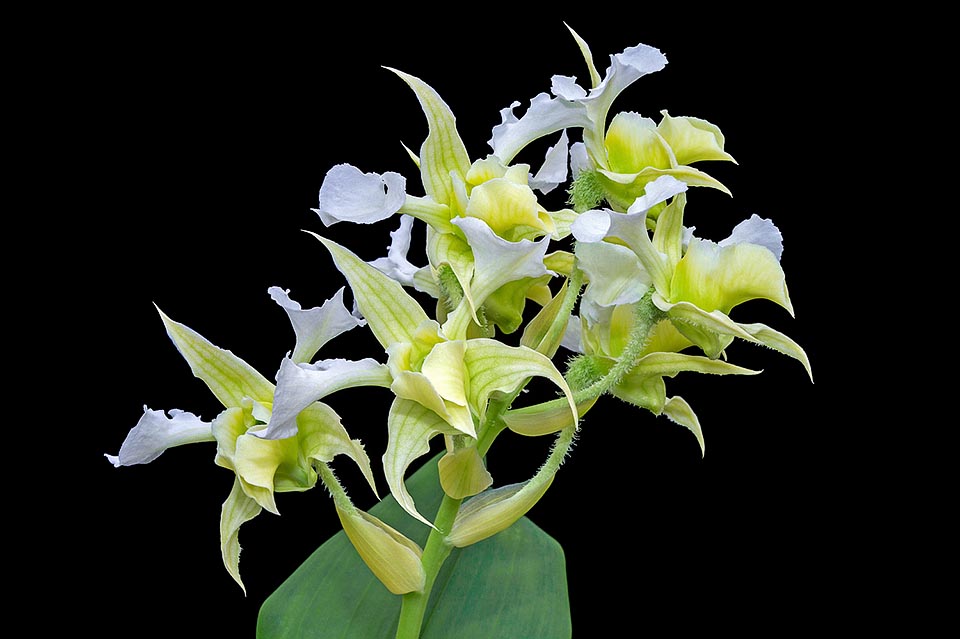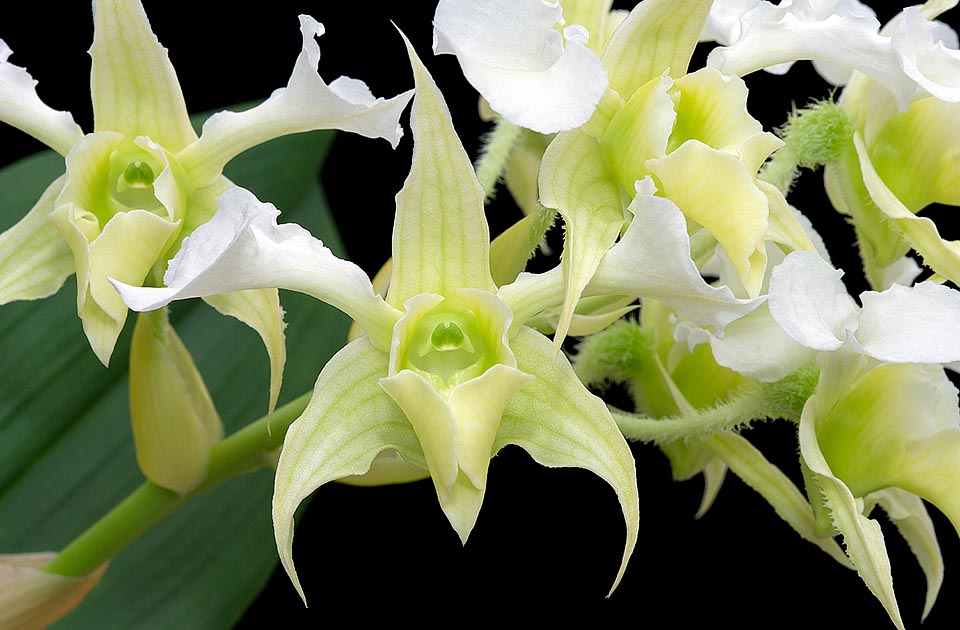Family : Orchidaceae

Text © Pietro Puccio

English translation by Mario Beltramini

The Dendrobium forbesii is a New Guinea epiphyte with fusiform close pseudobulbs of 20-35 cm © Giuseppe Mazza
The name of the genus is the combination of the Greek substantives “δένδρον” (dendron) = tree and “βίος” (bios) = life, with reference to the numerous species of the genus living on the trees; the species is dedicated to the Scottish naturalist and botanist Henry Ogg Forbes (1851-1932).
Common names: Forbes’ dendrobium (English).
The Dendrobium forbesii Ridl. (1886) is an epiphytic species with erect close pseudobulbs, fusiform, 20-35 cm long and of 2-2,5 cm of maximum diameter, provided at the apex of 2-3 alternate elliptical-lanceolate leaves with obtuse apex, 10-25 cm long and 5-9 cm broad, of intense green colour, coriaceous.
Racemose subterminal inflorescence, erect, 15-35 cm long, bearing up to 20 flowers, of 4-6 cm of diameter, of white, cream white or white-greenish colour with pale green veins; pedicel and ovary, covered by bristly hair, about 4 cm long. Lanceolate dorsal sepal with acuminate apex, 2-3 cm long and 0,5-1 cm broad, covered externally by sparse hair, obliquely lanceolate lateral sepals, with acuminate apex and an irregularly toothed keel along the median vein, united at the base to form a sort of conical spur (mentum) about 1 cm long.
Spatulate petals with acuminate apex and wavy margins, 2,5-3,5 cm long and 1,5-2 cm broad, trilobate labellum, 2-2,5 cm long and 2,5-3 cm broad (spread), with oblong lateral lobes with obtuse apex, erect at the sides of the column, at times with purple veins and spots, and oblong median lobe with apiculate apex and curved margins.
It reproduces by seed, in vitro, and by division, with each section provided of at least 3-4 pseudobulbs.
Vigourous species, of easy cultivation, with ornamental flowers of long duration, about three weeks, emitting a pleasant fragrance, requires a very luminous and well aerated cultivation place, medium-high temperatures in summer, 22-32 °C, slightly cooler in winter, with lowest night ones not under the 15 °C, and constant high humidity, 75-85%. Regular and abundant waterings during the growth of the pseudobulbs, then slightly more reduced till the vegetative restart, maintaining the substratum constantly humid. Fertilizations every 15 days during the growth period, monthly during the vegetative rest, with hydrosoluble balanced product, with microelements, at 1/3 the dosage reported on the package.

Coriaceous 10-25 cm leaves, 5-9 cm broad, and erect racemose 15-35 cm inflorescences bearing even 20 flowers © Giuseppe Mazza
The species is reported in the appendix II of the CITES (species whose trade is internationally ruled).

Vigorous species easy to cultivate, appreciated due to its odd flowers, with green, yellow and white elements, lasting even three weeks © Giuseppe Mazza
→ For general notions about ORCHIDACEAE please click here.
